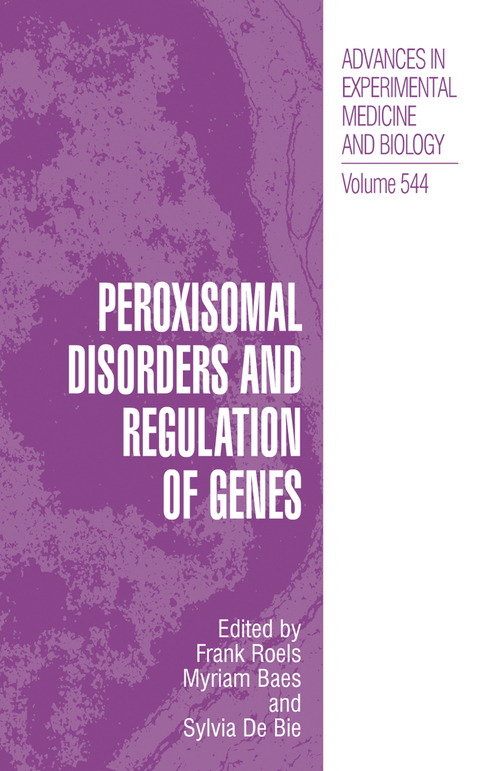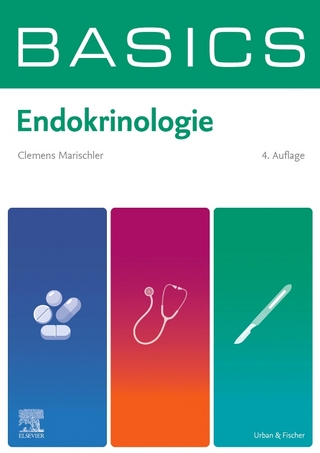
Peroxisomal Disorders and Regulation of Genes
Springer-Verlag New York Inc.
978-1-4613-4782-8 (ISBN)
Why study regulation of genes in inherited disorders?.- Variable Expression Of Peroxisomes And Their Disorders.- Phenotypic variability (heterogeneity) of peroxisomal disorders.- Mulibrey nanism: a novel peroxisomal disorder.- Peroxisomes during development and in distinct cell types.- Tissue-specific expression of two peroxisomal 3-ketoacyl-CoA thiolase genes in wild and PPAR?-null mice and
induction by fenofibrate.- Clinical features and retinal function in patients with adult Refsum syndrome.- Is there a phenotype/genotype correlation in peroxisome biogenesis disorders (PBDs)?.- Biochemical markers predicting survival in peroxisome biogenesis disorders.- Identification of PEX7 as the second gene involved in Refsum disease.- Genetic heterogeneity in Japanese patients with peroxisome biogenesis disorders and evidence for a founder haplotype for the most common mutation in PEXI0 gene.- Disturbances of valine metabolism in patients with peroxisomal biogenesis disorders.- Mouse models and genetic modifiers in X-linked adrenoleukodystrophy.- Evidence against the adrenoleukodystrophy-related gene acting as a modifier of X-adrenoleukodystrophy.- Peroxisome mosaics.- Resolution of the molecular defect in a patient with peroxisomal mosaicism in the liver.- Lessons from knockout mice I: Phenotypes of mice with peroxisome biogenesis disorders.- Lessons from knockout mice II: Mouse models for peroxisomal disorders with single protein deficiency.- Molecular Mechanisms Of Gene Regulation.- DNA methylation and human diseases.- RNA silencing.- Imprinting.- Histone Modifications-Marks for Gene Expression?.- A paradigm for gene regulation: inflammation, NF-KB and PPAR.- Investigative Techniques.- Methods: DNA methylation.- RNA interference in mammalian systems: A practical approach.-Histone modifications: methods and techniques.- Characterization of the peroxisomal cycling receptor Pex5p import pathway.- Interaction of PEX3 and PEX19 visualized by fluorescence resonance energy transfer (FRET).- Gene Regulation of Peroxisomal Enzymes by Nutrients, Hormones and Nuclear Signalling Factors in Animal and Human Species.- Regulation of peroxisomal genes by dehydroepiandosterone and vit D.- Effect of DHEA supplementation on fatty acid and hormone levels in patients with X-linked adrenoleukodystrophy.- Dehydroepiandrosterone induction of the Abcd2 and Abcd3 genes encoding peroxisomal ABC transporters: implications for X-linked adrenoleukodystrophy.- Phytanic and pristanic acids are naturally occurring ligands.- Modifying the peroxisomes by cell & tissue culture.- Pharmacological induction of redundant genes for a therapy of X-ALD: phenylbutyrate and other compounds.- Peroxisomal fatty acid alpha- and beta-oxidation in health and disease: new insights.- Role of phytanoyl-CoA 2-hydroxylase in phytanic acid degradation.- Thiamine pyrophospate: an essential cofactor in the mammalian metabolism of 3-methyl-branched fatty acids — implications for thiamine deficiency?.- Metabolic regulation of peroxisomal and mitochondrial fatty acid oxidation.- Cholesterol biosynthesis and regulation: role of peroxisomes.- Peroxisome deficiency does not result in deficiency of enzymes involved in cholesterol biosynthesis.- Cholesterol regulates ABCD2 gene expression: implication for X-linked adrenoleuko-dystrophy.- Regulation of farnesyl diphosphate synthase gene expression by fatty acids.- Plasmalogens, docosahexaenoic acid and neurological disorders.- Targeted disruption of ether lipid synthesis in mice.- Evaluation of the preventive effect of glyceryl trioleate-trierucate(Lorenzo's oil) therapy in presymptomatic X-linked adrenoleukodystrophy. Results of two concurrent studies.- Author Index.
| Reihe/Serie | Advances in Experimental Medicine and Biology ; 544 |
|---|---|
| Zusatzinfo | XIV, 429 p. |
| Verlagsort | New York, NY |
| Sprache | englisch |
| Maße | 178 x 254 mm |
| Themenwelt | Medizinische Fachgebiete ► Innere Medizin ► Endokrinologie |
| Medizin / Pharmazie ► Medizinische Fachgebiete ► Neurologie | |
| Medizin / Pharmazie ► Medizinische Fachgebiete ► Pädiatrie | |
| Studium ► 1. Studienabschnitt (Vorklinik) ► Biochemie / Molekularbiologie | |
| Studium ► 2. Studienabschnitt (Klinik) ► Humangenetik | |
| Naturwissenschaften ► Biologie ► Biochemie | |
| ISBN-10 | 1-4613-4782-3 / 1461347823 |
| ISBN-13 | 978-1-4613-4782-8 / 9781461347828 |
| Zustand | Neuware |
| Haben Sie eine Frage zum Produkt? |
aus dem Bereich


